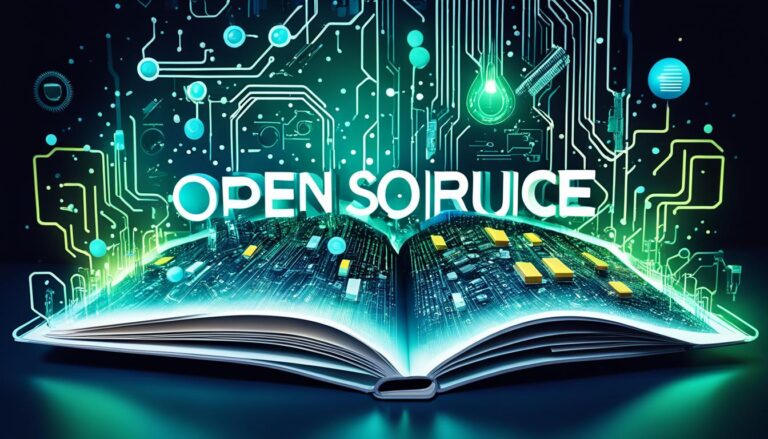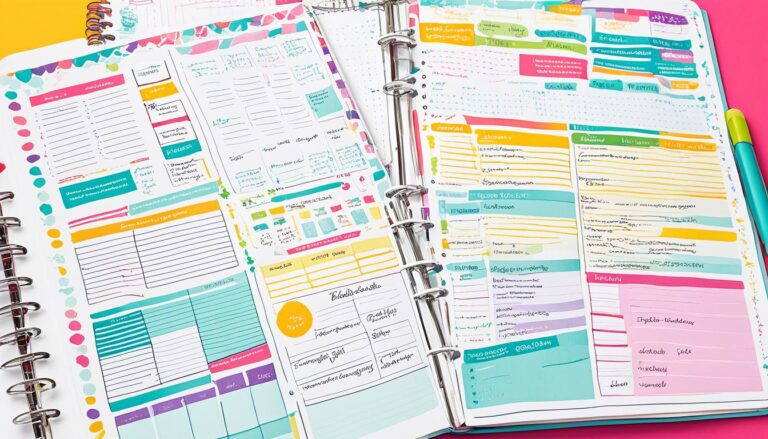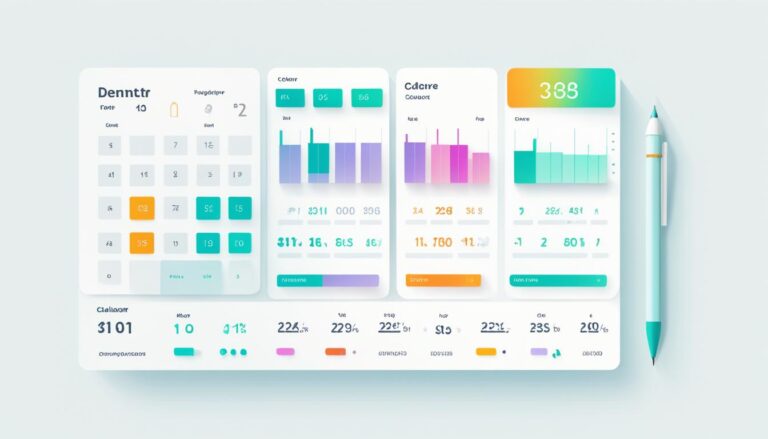Boost Your Productivity Improvement Journey Now

Are you tired of feeling overwhelmed and struggling to accomplish your tasks efficiently? Do you find yourself constantly distracted and unable to focus on what truly matters? If so, it’s time to embark on a productivity improvement journey that will transform the way you work.
Productivity improvement is not just about working harder or longer hours. It’s about working smarter, optimizing your time, and achieving more with less effort. By implementing effective strategies in time management, goal setting, and workflow optimization, you can unlock your full potential and accomplish your goals with ease.
In this article, we will explore the key steps to boost your productivity improvement journey. From setting clear goals to prioritizing tasks, optimizing your workflow, practicing effective time management, embracing the power of deep work, and adopting effective communication strategies, you will learn actionable techniques to enhance your productivity levels and achieve success.
Key Takeaways:
- Setting clear and specific goals is essential for prioritizing your efforts and making the most of your time.
- Prioritizing and delegating tasks helps you focus on what matters most and reduces overwhelm.
- Optimizing your workflow through automation and organization strategies can significantly enhance productivity.
- Effective time management techniques, such as finding your most productive hours and minimizing distractions, are crucial for maximizing your productivity.
- Embracing the power of deep work allows you to achieve a state of focused concentration and accomplish tasks efficiently.
Are you ready to embark on your productivity improvement journey? Let’s dive in and discover the strategies that will revolutionize the way you work and help you accomplish more with less effort.
Prioritize and Delegate Tasks
Efficiency optimization is key to maximizing your productivity. One of the most effective ways to optimize your efficiency is by prioritizing and delegating tasks. When you have a clear understanding of what needs to be done and who can best handle certain responsibilities, you can make the most of your time and energy.
Task prioritization is crucial for staying focused and organized. By distinguishing between urgent and important tasks, you can allocate your time wisely and address the most critical tasks first. This helps to prevent unnecessary stress and ensures that you’re making progress on the tasks that truly matter.
Delegation is another powerful strategy for efficiency optimization. Recognize that you don’t have to do everything yourself. By entrusting certain tasks to capable colleagues or team members, you free up your time to focus on high-value activities that require your expertise. Delegation not only reduces your workload but also promotes collaboration and empowers others to contribute their skills.
To effectively prioritize and delegate tasks, consider the following steps:
- Assess the urgency and importance: Evaluate each task based on its urgency and its impact on your overall goals. This will help you determine which tasks should take precedence.
- Identify strengths and skillsets: Recognize the strengths and capabilities of your team members. Delegate tasks that align with their skills, allowing them to excel and contribute to your collective success.
- Establish clear communication: Clearly communicate your expectations, deadlines, and desired outcomes when assigning tasks to others. This ensures everyone is on the same page and helps avoid misunderstandings.
- Maintain accountability: While delegating tasks, provide the necessary support and guidance to ensure successful outcomes. Regularly check in with your team members to monitor progress and address any challenges.
Remember, task prioritization and delegation are not signs of weakness or laziness but rather strategic choices that allow you to optimize your productivity and achieve better results. Mastering these strategies will help you make the most of your time and energy, leading to increased efficiency and success.

Optimize Your Workflow
To maximize your productivity, it’s essential to optimize your workflow. By identifying bottlenecks and streamlining processes, you can ensure a smooth and efficient work experience. Additionally, leveraging technology and automation tools can simplify your tasks and boost your productivity. Organizing your workspace is also crucial for maintaining focus and productivity. Follow these strategies to optimize your workflow and achieve your goals.
Streamline Processes
Streamlining your processes involves identifying inefficiencies and finding solutions to improve them. By analyzing your workflow, you can pinpoint areas that consume excessive time or resources. Consider the following steps to streamline your processes:
- Map out your workflows to visualize the steps involved and identify redundancies or unnecessary tasks.
- Eliminate non-value-added activities and streamline the sequence of tasks to optimize efficiency.
- Simplify complex processes by breaking them down into smaller, manageable steps.
- Identify opportunities for automation and explore tools that can automate repetitive or time-consuming tasks.
Leverage Technology and Automation
Technology has revolutionized the way we work, providing countless tools and software solutions to automate tasks and improve efficiency. By integrating automation into your workflow, you can save time and reduce human error. Consider the following technologies and automation tools:
- Project management software for organizing tasks, deadlines, and team collaboration.
- Email automation tools for scheduling and automating routine email tasks.
- Cloud storage solutions for easy access to files from anywhere and seamless collaboration.
- Task management apps for creating to-do lists, setting reminders, and tracking progress.
- Workflow automation tools for automating repetitive tasks and reducing manual intervention.
By leveraging technology and automation, you can focus on high-value activities and eliminate time-consuming manual tasks.
Create an Organized and Clutter-Free Workspace
An organized workspace is essential for maintaining focus and productivity. Consider the following organization strategies:
- Declutter your physical workspace by organizing papers, supplies, and equipment.
- Create a file management system to easily locate and store digital documents.
- Use productivity apps or project management tools to keep track of deadlines and tasks.
- Implement a clean desk policy to minimize distractions and improve focus.
- Label and categorize items for easy access and efficient workflows.
Remember, an organized workspace promotes a clear mind, allowing you to work efficiently and effectively.
Comparison of Workflow Optimization Strategies
| Strategy | Benefits |
|---|---|
| Streamline Processes | – Reduces wasted time and resources – Increases efficiency and productivity – Improves overall workflow |
| Leverage Technology and Automation | – Saves time by automating repetitive tasks – Reduces human error – Increases accuracy and speed |
| Create an Organized Workspace | – Boosts focus and concentration – Reduces distractions – Enhances productivity |
Practice Effective Time Management
Effective time management is the key to unlocking your productivity potential. By mastering the art of managing your time wisely, you can accomplish more in less time and make significant progress towards your goals. In this section, we’ll explore various techniques and strategies to help you optimize your time and enhance your focus.
Finding Your Most Productive Hours
Everyone has their own unique rhythm when it comes to productivity. Some people are most alert and focused in the morning, while others find their peak performance in the afternoon or evening. It’s crucial to identify your most productive hours and align your most important tasks during those times. By doing so, you can maximize your efficiency and make the most of your peak energy levels.
Breaking Your Work into Manageable Chunks
One common mistake people make is trying to tackle large, overwhelming tasks all at once. Instead, break your work into smaller, manageable chunks. This approach allows you to focus on one task at a time, eliminating the feeling of being overwhelmed and increasing your overall productivity. Set achievable milestones for each chunk, and celebrate your accomplishments along the way to stay motivated.
Minimizing Distractions
Distractions can significantly impact your ability to concentrate and complete tasks efficiently. Create a dedicated workspace or find a quiet environment where you can minimize interruptions and distractions. Turn off notifications on your phone or use apps that block distracting websites during focused work sessions. By reducing distractions, you can maintain your focus and complete tasks more effectively.
Insightful Tip: Consider using the Pomodoro Technique, which involves working for a set amount of time (usually 25 minutes) followed by a short break. This method can help you maintain focus and increase productivity by breaking your work into manageable intervals.
Embracing the Concept of Deep Work
Deep work is a state of uninterrupted focus where you can fully immerse yourself in the task at hand. It allows you to tap into your highest cognitive abilities and achieve remarkable results. To embrace deep work, designate specific blocks of time where you eliminate distractions and engage in highly focused work. By eliminating distractions and immersing yourself in deep work, you can accomplish tasks with greater speed and quality.

Complete Table: Time Management Techniques
| Technique | Description |
|---|---|
| The Eisenhower Matrix | A prioritization tool that helps you categorize tasks based on their urgency and importance. |
| The Two-Minute Rule | If a task can be completed in two minutes or less, do it immediately rather than postponing. |
| Time Blocking | Setting aside specific blocks of time for focused work on different tasks or projects. |
| Batching | Grouping similar tasks together and tackling them in a single session to minimize context switching. |
| The 80/20 Rule | Focusing on the vital few tasks that yield the greatest results and prioritizing them over less impactful activities. |
Embrace the Power of Deep Work
Deep work is a transformative practice that can take your productivity to new heights. It’s a state of focused, uninterrupted concentration that allows you to dive deep into tasks and produce high-quality work. By immersing yourself in deep work, you can tap into your full potential and achieve remarkable results.
When you engage in deep work, distractions fade away, and your focus becomes laser-sharp. You enter a state of flow where your productivity levels soar, and you accomplish tasks with greater efficiency. Deep work allows you to fully engage with your work, unravel complex problems, and generate creative solutions.
To embrace the power of deep work, it’s crucial to create an environment that supports this immersive state of concentration. Minimize interruptions by turning off notifications and setting boundaries with your colleagues. Designate specific blocks of time for deep work, free from distractions and interruptions. Clear your workspace of clutter and create a calm, organized setting that promotes focus and clarity.
Remember that deep work requires practice and discipline. Start by allocating short periods of focused time to important tasks and gradually increase the duration as you build your concentration muscle. Over time, you’ll notice significant improvements in your ability to sustain deep work and accomplish meaningful work.

The Benefits of Deep Work
Embracing deep work offers numerous benefits that can propel your productivity to unparalleled heights:
- Focused Attention: Deep work allows you to fully immerse yourself in the task at hand, enhancing your ability to concentrate and minimizing distractions.
- Enhanced Creativity: When you engage in deep work, you enter a state of flow that unleashes your creative potential and allows for innovative thinking.
- Increased Productivity: Deep work enables you to accomplish more in less time as you eliminate nonessential tasks and dedicate your energy to high-value activities.
- Improved Problem-Solving: By devoting uninterrupted time to complex problems, you can delve deeper into their intricacies and discover effective solutions.
- Heightened Focus: Deep work cultivates your ability to concentrate and sustain attention, resulting in greater clarity and better decision making.
By embracing the power of deep work, you unlock a realm of untapped potential within yourself. Prioritize deep work in your daily routine, and witness the transformation it brings to your focus, productivity levels, and overall success.
| Deep Work Strategies | Benefits |
|---|---|
|
|
Adopt Effective Communication Strategies
Communication is the key to unlocking the full potential of your team and driving productivity improvement. By implementing effective communication strategies, you can foster collaboration, enhance teamwork, and achieve remarkable results. In this section, we will explore the importance of effective communication in fostering collaboration and productivity. We’ll delve into proven strategies that will empower you to communicate more effectively with your colleagues and create a productive work environment.
Active Listening for Enhanced Understanding
One of the most crucial aspects of effective communication is active listening. When you actively listen to your colleagues, you show them respect and value their ideas. This approach fosters a culture of trust and open communication, leading to increased collaboration and productivity. To become an active listener, focus your attention on the speaker, maintain eye contact, and avoid interrupting. Emphasize understanding rather than speaking, and respond with empathy and thoughtful questions.
Asking Clarifying Questions for Clear Communication
In any work setting, clarity is paramount for effective communication. To ensure clear understanding, ask clarifying questions when receiving instructions or information. By asking questions, you demonstrate your commitment to comprehension and your desire to deliver exceptional work. Clarifying questions help eliminate misunderstandings, reduce errors, and streamline workflows. Remember, there are no foolish questions, only opportunities for growth and improved communication.
Providing Actionable Feedback for Growth
Feedback is a powerful tool for personal and professional growth. When providing feedback to your colleagues, ensure it is specific, timely, and actionable. Constructive feedback should be focused on behavior or performance, not on personal attacks or criticism. By providing actionable feedback, you empower your colleagues to make necessary adjustments, improve their skills, and contribute to a culture of continuous improvement. Remember, feedback is a gift that promotes success for individuals and the entire team.
Streamline Communication with Tools
Technology can streamline communication and enhance productivity. Take advantage of communication tools such as project management software, instant messaging apps, and video conference platforms. These tools facilitate real-time collaboration, eliminate unnecessary meetings and emails, and keep team members informed and engaged. By embracing technology, you can save time, increase efficiency, and create a seamless communication process within your organization.

| Benefits of Effective Communication Strategies | Collaboration | Productivity |
|---|---|---|
| Enhanced teamwork and cooperation | ✓ | ✓ |
| Faster decision-making process | ✓ | ✓ |
| Reduced misunderstandings and conflicts | ✓ | ✓ |
| Increased employee satisfaction and engagement | ✓ | ✓ |
| Effective problem-solving and innovation | ✓ | ✓ |
Conclusion
In conclusion, your productivity improvement journey is a continuous process that requires commitment and a growth mindset. Throughout this article, we have explored a range of strategies to help you enhance your productivity and achieve success in all aspects of your life.
By setting clear goals, prioritizing your tasks, and delegating when necessary, you can optimize your workflow and make the most of your time. Effective time management techniques, such as finding your most productive hours and minimizing distractions, will further boost your efficiency.
Embracing deep work and creating a focused workspace will allow you to enter a state of uninterrupted concentration, enabling you to accomplish tasks more effectively. Additionally, adopting effective communication strategies and continuously learning from your experiences will enhance collaboration and productivity.
Remember, your productivity journey is not a one-time event, but a continuous process of improvement. By implementing the strategies discussed in this article and maintaining a productivity mindset, you can unlock your full potential and achieve success both personally and professionally. Start your productivity journey today and embrace the possibilities of continuous improvement!






